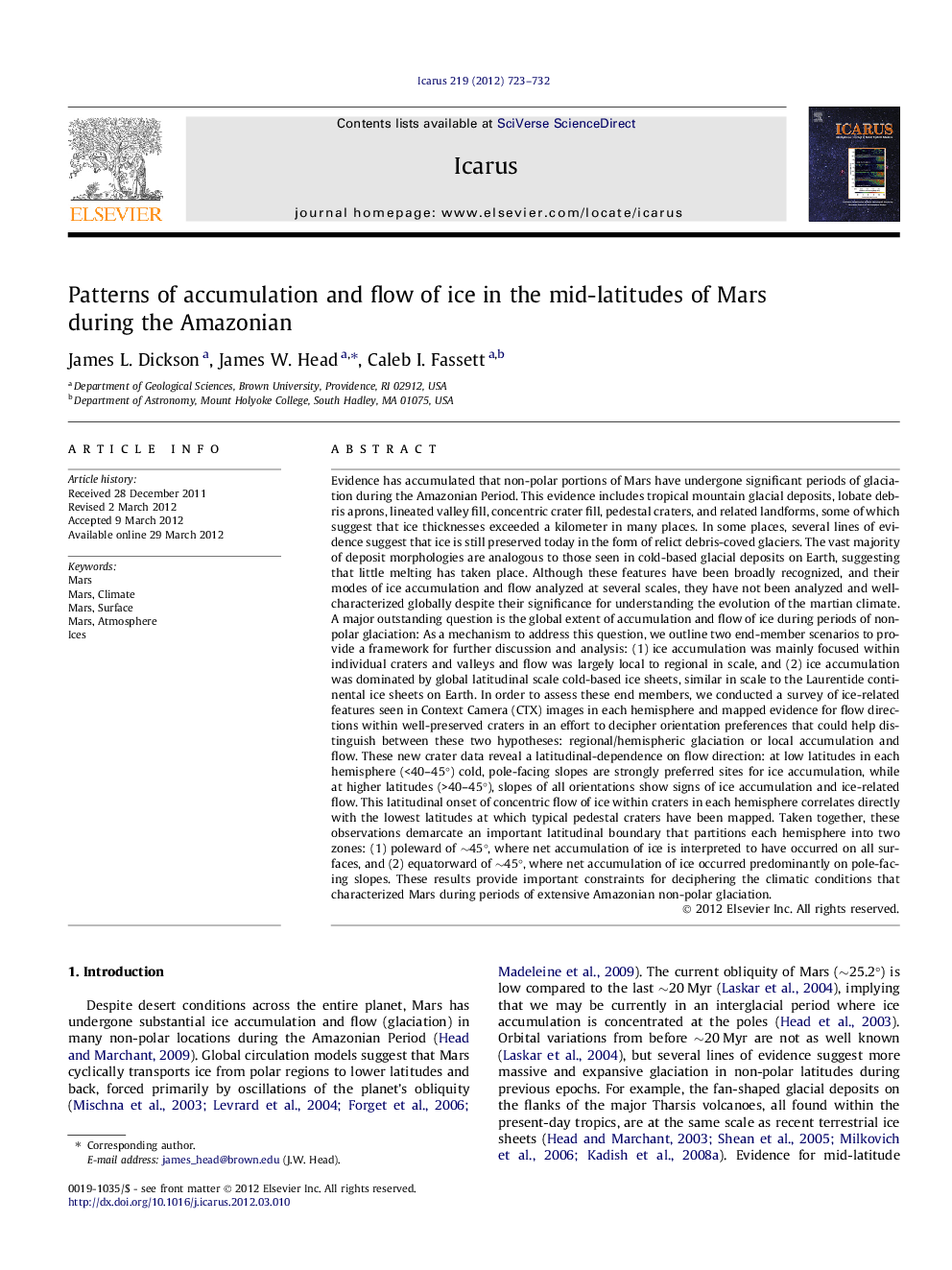| کد مقاله | کد نشریه | سال انتشار | مقاله انگلیسی | نسخه تمام متن |
|---|---|---|---|---|
| 1773601 | 1021140 | 2012 | 10 صفحه PDF | دانلود رایگان |

Evidence has accumulated that non-polar portions of Mars have undergone significant periods of glaciation during the Amazonian Period. This evidence includes tropical mountain glacial deposits, lobate debris aprons, lineated valley fill, concentric crater fill, pedestal craters, and related landforms, some of which suggest that ice thicknesses exceeded a kilometer in many places. In some places, several lines of evidence suggest that ice is still preserved today in the form of relict debris-coved glaciers. The vast majority of deposit morphologies are analogous to those seen in cold-based glacial deposits on Earth, suggesting that little melting has taken place. Although these features have been broadly recognized, and their modes of ice accumulation and flow analyzed at several scales, they have not been analyzed and well-characterized globally despite their significance for understanding the evolution of the martian climate. A major outstanding question is the global extent of accumulation and flow of ice during periods of non-polar glaciation: As a mechanism to address this question, we outline two end-member scenarios to provide a framework for further discussion and analysis: (1) ice accumulation was mainly focused within individual craters and valleys and flow was largely local to regional in scale, and (2) ice accumulation was dominated by global latitudinal scale cold-based ice sheets, similar in scale to the Laurentide continental ice sheets on Earth. In order to assess these end members, we conducted a survey of ice-related features seen in Context Camera (CTX) images in each hemisphere and mapped evidence for flow directions within well-preserved craters in an effort to decipher orientation preferences that could help distinguish between these two hypotheses: regional/hemispheric glaciation or local accumulation and flow. These new crater data reveal a latitudinal-dependence on flow direction: at low latitudes in each hemisphere (<40–45°) cold, pole-facing slopes are strongly preferred sites for ice accumulation, while at higher latitudes (>40–45°), slopes of all orientations show signs of ice accumulation and ice-related flow. This latitudinal onset of concentric flow of ice within craters in each hemisphere correlates directly with the lowest latitudes at which typical pedestal craters have been mapped. Taken together, these observations demarcate an important latitudinal boundary that partitions each hemisphere into two zones: (1) poleward of ∼45°, where net accumulation of ice is interpreted to have occurred on all surfaces, and (2) equatorward of ∼45°, where net accumulation of ice occurred predominantly on pole-facing slopes. These results provide important constraints for deciphering the climatic conditions that characterized Mars during periods of extensive Amazonian non-polar glaciation.
► The orientation of ice-related flow features on Mars is latitude dependent.
► Ice-related flow almost always trends towards the pole at mid-latitudes.
► Flow occurs evenly at all orientations poleward of 45°.
► Concentric flow of ice matches the distribution of pedestal craters.
► We can now map where ice has been capable of accumulating in the Amazonian.
Journal: Icarus - Volume 219, Issue 2, June 2012, Pages 723–732